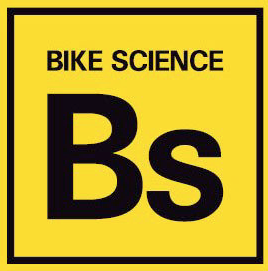Many customers ask us how simply testing their fitness could ever make them a faster rider. Surely being able to shout about your power to weight ratio, or lactate threshold at the mid-ride coffee stop is all wonderful, but it won't beat everyone up the local climb.
The answer is that sometimes boasting of huge power outputs is enough to put other off, but in reality the way to get faster at riding your bike, is to train. Training can take many different forms, most of which include riding your bike, but simply riding will only take you so far. When the days are short and the weather isn't warm and sunny, you might only be able to scrape a handful of hours either on the turbo/rollers or in the wind/rain/fog. So what to do with those precious hours on the bike?
This is where the lactate test comes in. By accurately measuring your current performance, we can determine which riding intensities will gain you the most bang for your buck with only a few hours to train in. As an example, one of our customers came to us back in January 2015, feeling like she was going backwards over the winter, struggling to work out how on earth she was going to make any year on year improvements in her chosen discipline of time trialling. So we tested her fitness and got the following results....
"Your Aerobic Threshold occurred at 155 Watts, at 148 beats/minute.
Your Lactate Threshold occurred at 205 Watts and at a heart rate of 173 beats/min.
Your Power at VO2 max was 250 Watts, at a heart rate of 189 beats/min."
As a small amount of background, Aerobic Threshold is the intensity you can comfortably maintain all day long (assuming you keep eating and drinking), Lactate Threshold is pretty hard, and most people can just about manage an hour, and Power at VO2 max is the maximum power you can manage for around 3-5 minutes.
So taking these results alongside the goal of 10 and 25 mile time trials, we concluded that the best use of training time at that time of year would be to do plenty of work on the Aerobic Threshold. This meant lots of hours at a relatively easy intensity, with only one harder session each week. The harder session (usually done on the turbo, sometimes the velodrome) worked on the Lactate Threshold. This was important to maintain, even in January, as it is the Lactate Threshold which has the most influence on 10 and 25 mile TT performance. So off she went to train.....
Once June came around, and TT season was well underway, things were going OK racing wise for our customer. So she came in for another test to see if her training should also be tweaked. The results were as follows...
"Your Aerobic Threshold moved from 155 Watts, at 148 beats/minute to 205 Watts, at 151 beats/minute.
Your Lactate Threshold moved from 205 Watts and at a heart rate of 173 beats/min to 240 Watts, at 167 beats/minute.
Your Power at VO2 max moved from 250 Watts, at a heart rate of 189 beats/min to 285 Watts at 188 beats/minute."
In graphical terms, that looks like this, with the blue lactate curve representing Januarys test, and the green curve the results from June. The red dots are the heart rate values from June...
From the graph it is now possible to read off a power output from the x axis and equate that to a level of lactate (which represents fatigue) on the left hand y axis. At every power output, less lactate (and less fatigue) was being produced.
By this stage in the season, it became more important to work on race efforts (between Lactate Threshold and Power at VO2 max), whilst maintaining a small amount of training at aerobic threshold.
The second part of the season went pretty well, and as the autumn comes around most cyclists tend to take their foot off the gas a little, and our case study was no different. However the purchase of a new turbo trainer was a great kick start to get back into training again, so it was time for another test. Between January and November, the numbers look like this....
"Your Aerobic Threshold moved from 155 Watts, at 148 beats/minute to 215 Watts, at 150 beats/minute. That's a 39% increase.
Your Lactate Threshold moved from 205 Watts and at a heart rate of 173 beats/min to 260 Watts, at 172 beats/minute. That's a 27% increase.
Your Power at VO2 max moved from 250 Watts, at a heart rate of 189 beats/min to 300 Watts at 187 beats/minute. That's a 20% increase."
In graph form that looks like this...
So in summary, the testing itself won't make you faster, but if you use the numbers from accurate testing to shape the way you train over a period of time, it is really hard to get slower, no matter what your starting point is.
This is the perfect time of year to be thinking about next summers goals, so if you could do with producing 27% more power for a 25mile TT at the same level of effort then book in for your first test today by clicking here...




